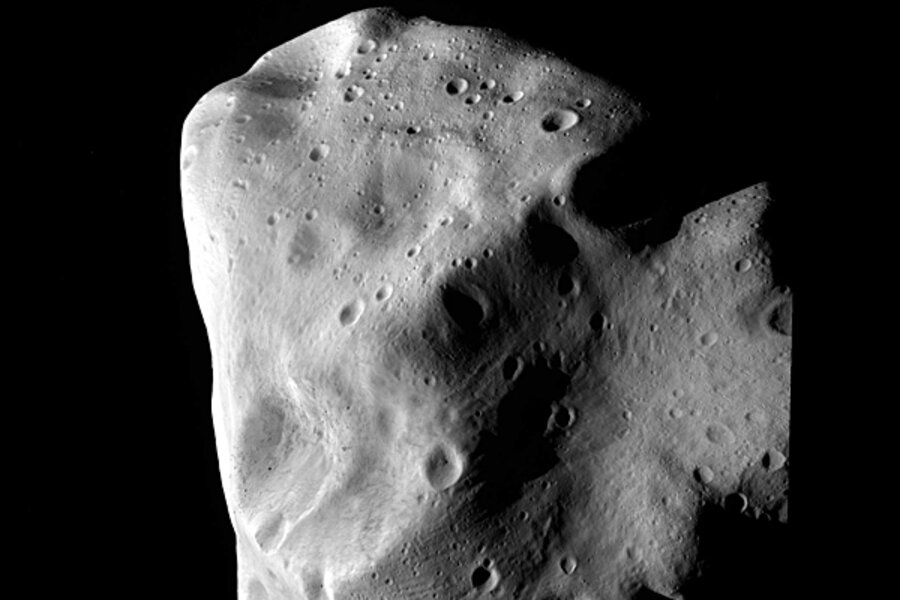European space probe flies by asteroid, notes that it is really weird looking
Loading...
A European space probe has beamed back a haunting image of an alien space rock with unique angles and surface coating that raises more questions about asteroids than it answers.
The European Space Agency's Rosetta spacecraft recently flew by Lutetia, a huge asteroid midway along Rosetta's path to its ultimate destination, the comet 67P/Churyumov-Gerasimenko, which it is due to reach in 2014.
Near-Earth objects are a topic of growing interest to scientists. A two-day NASA workshop in Washington, D.C., this week is tackling topics such as what to do about space rocks that could threaten Earth, as well as how to transport astronauts to an asteroid for exploration — a goal under President Barack Obama's vision for the space agency.
Missions like Rosetta's could help scientists learn more about space rocks and inform these and other goals.
At about 100 kilometers (62 miles) wide, Lutetia was the largest asteroid yet visited by a spacecraft.
A close approach to Lutetia allowed the probe to snap photos and measurements using 17 different onboard instruments. The results paint a picture of a strange asteroid indeed.
"I've never seen anything like it," said Claudia Alexander, project scientist for the U.S. Rosetta Project. "It looked as though it could have been fractured off of a mother asteroid — it was all angles and flat planes, ancient impacts overlaid by newer ones, covered by dust of some kind."
More mysteries
One giant dent in the asteroid's side was particularly puzzling. Alexander guessed that some other space rock had collided with Lutetia long ago.
The surface of Lutetia also had an odd appearance, as if some large boulders had rolled over it.
"If that is indeed what we're seeing, the question becomes: What could have caused the rolling?" Alexander said. "Perhaps the asteroid spun up, spun down or experienced some orbital irregularity. It's not clear right now that the asteroid is subject to the forces that could cause these things. This is another issue for further study."
Astronomers have been interested in Lutetia for years because it is one of the largest asteroids in the solar system. The light reflecting off of it produces a pattern unlike that of any other asteroid that has been studied.
"Right now we have more questions than answers," Alexander said. "We can only speculate at this point about what we're seeing in the pictures."
Asteroids revealed
Scientists expect the data from Rosetta's visit to help them calculate the asteroid's mass and density, which could reveal more about its creation and composition.
One idea posits that Lutetia was born when a planet broke apart billions of years ago. Or maybe this bit of rock was a leftover from the beginning of the solar system — a fragment of planet-building material, called a planetesimal, that never got used to create a larger body.
During the coming months astronomers will analyze the trove of information provided by Rosetta to begin assembling some answers.
"When all the data are analyzed, Lutetia will be one of the best-known asteroids out there," said Rita Schulz, ESA project scientist for the Rosetta Mission. "These spectacular images are just the beginning."





